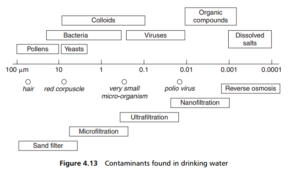0
-
An empty cart
You have no item in your shopping cart
envato-wordpress-toolkit domain was triggered too early. This is usually an indicator for some code in the plugin or theme running too early. Translations should be loaded at the init action or later. Please see Debugging in WordPress for more information. (This message was added in version 6.7.0.) in /var/www/wp-includes/functions.php on line 6121g5plus-darna domain was triggered too early. This is usually an indicator for some code in the plugin or theme running too early. Translations should be loaded at the init action or later. Please see Debugging in WordPress for more information. (This message was added in version 6.7.0.) in /var/www/wp-includes/functions.php on line 6121The World Health Organization has identified 752 substances that can be present in tap water. Water authorities are obliged to monitor the levels of only 66 of them, and bottled water manufacturers only 28. Up until about 30 years ago, lead was
thought to be the only dangerous pollutant in drinking water. Today, in addition to lead, pesticides, bacteria, viruses, coliphage, nitrates, chlorine, chloro-organics and aluminium must be added to a growing list of health hazards. Contaminants typically found in water are shown in Figure 4.13.

Chlorine has been widely used by water authorities as a sterilizing agent, and hence its appearance in a list of water contaminants. However, chlorination is no longer believed to be completely effective as a method of killing bacteria, because
of the need to use excess chlorine to last from the works to the domestic tap, hence the imparting of an unpleasant taste and an odour to drinking water. Another side effect of chlorination is now giving rise to concern: chlorine reacts with small particles of organic compounds to create a group of compounds called trihalomethanes, which are under increasing suspicion from toxicologists.
Bacterial diseases, which are usually spread through water contamination, are a cause for major concern throughout the world. Cholera is very widespread, despite the fact that huge numbers (about one billion) of the cholera bacteria are needed to cause infection.
The parasitic protozoan Cryptosporidium is also widely distributed in nature, infecting a wide range of hosts including farm animals and pets. The protozoa get into the water supply from animal excrement. The problem is that they form a protective stage known as oocysts, which allow them to survive for long periods in water (up to perhaps eighteen months) whilst waiting to be consumed by a suitable host. Once infected, a host becomes a lifetime carrier, liable to relapses – and it only takes a single Cryptosporidium oocyst to cause infection. In normal patients, Cryptosporidium gives rise to self-limiting gastro-enteritis, which can last for up to two weeks. If the patient is immunosuppressed, infection is life threatening.
Cryptosporidium is widespread in drinking water resources. The cysts are only 4–7 um across, and are very difficult to detect and remove from water by conventional water treatment (but are easily removable by micro or ultrafiltration). They also resist chlorine.
Giardia lamblia is another oocyst that causes disease, but, unlike Cryptosporidium it is treatable with antibiotics. Both Giardia and Cryptosporidium can be killed by boiling the water for twenty minutes, but, unfortunately, boiling concentrates metals such as lead and aluminium in the water.
Bacteria and viruses may be eliminated from water by ultrafiltration membrane separations, or just bacteria by using microfiltration. On the small, local scale membrane filter units are ideal for treating drinking water, especially if coupled with an activated carbon element to remove colour and unpleasant taste.
In the laboratory, filter life may be assessed in various ways, e.g. by chlorine break-through showing the end of life of an adsorbent element, the bacterial counts in the effluent, colour tests, and differential pressure (indicating clogging of the
filter). Bacterial count tests are obviously of major significance.
Apart from chlorine and hydrogen sulphide, the origin of bad tastes and odours in raw waters are usually organic contaminants. Here, the ability of a filter to remove methylene blue from water is a standard and demanding test for organics removal capability. The longer a filter can continue to deliver clear filtrate when fed with methylene blue loaded liquid, the better its ability to cope with organics. This particular test is a simple one by which to compare the performance of different filters.
Look for more information, please clcik here.